With the alien fungal disease white-nose syndrome devastating North American bats it’s time for some good news about the order. So consider the U.S. Fish and Wildlife Service’s January 5th proposal to delist the endangered lesser long-nosed bat.
“In 1988 there were thought to be fewer than 1,000 bats at the 14 known roosts range wide,” stated the Service. “There are now an estimated 200,000 bats at 75 roosts.”
That phrasing is a bit misleading. The reason there were thought to be fewer than 1,000 bats in 1988 was because most roosts hadn’t been discovered. Still, the recovery work has been inspiring, the resultant population surge remarkable. As the Service’s Arizona field supervisor, Steve Spangle, puts it: “This has been an international team effort involving citizen scientists in Pima County, tequila producers in Mexico, biologists in both the U.S. and Mexico, non-governmental organizations and federal and state agencies, all pulling together under the organizing banner of the Endangered Species Act.”
The Service has a year to consider public comments and render a decision, but it’s clear that delisting is a done deal. “In my business you’re surprised if you don’t get comments against what you’re doing,” Spangle told me. “I’ve heard none.” This will be the first bat taken off the Endangered Species List.
The Chupacabra Scare
The lesser long-nosed bat is a night-flying nectar feeder, evolved to collect pollen on its hairy, elongated muzzle and distribute it to hundreds of plant species which concurrently evolved to feed this bat and other pollinators.
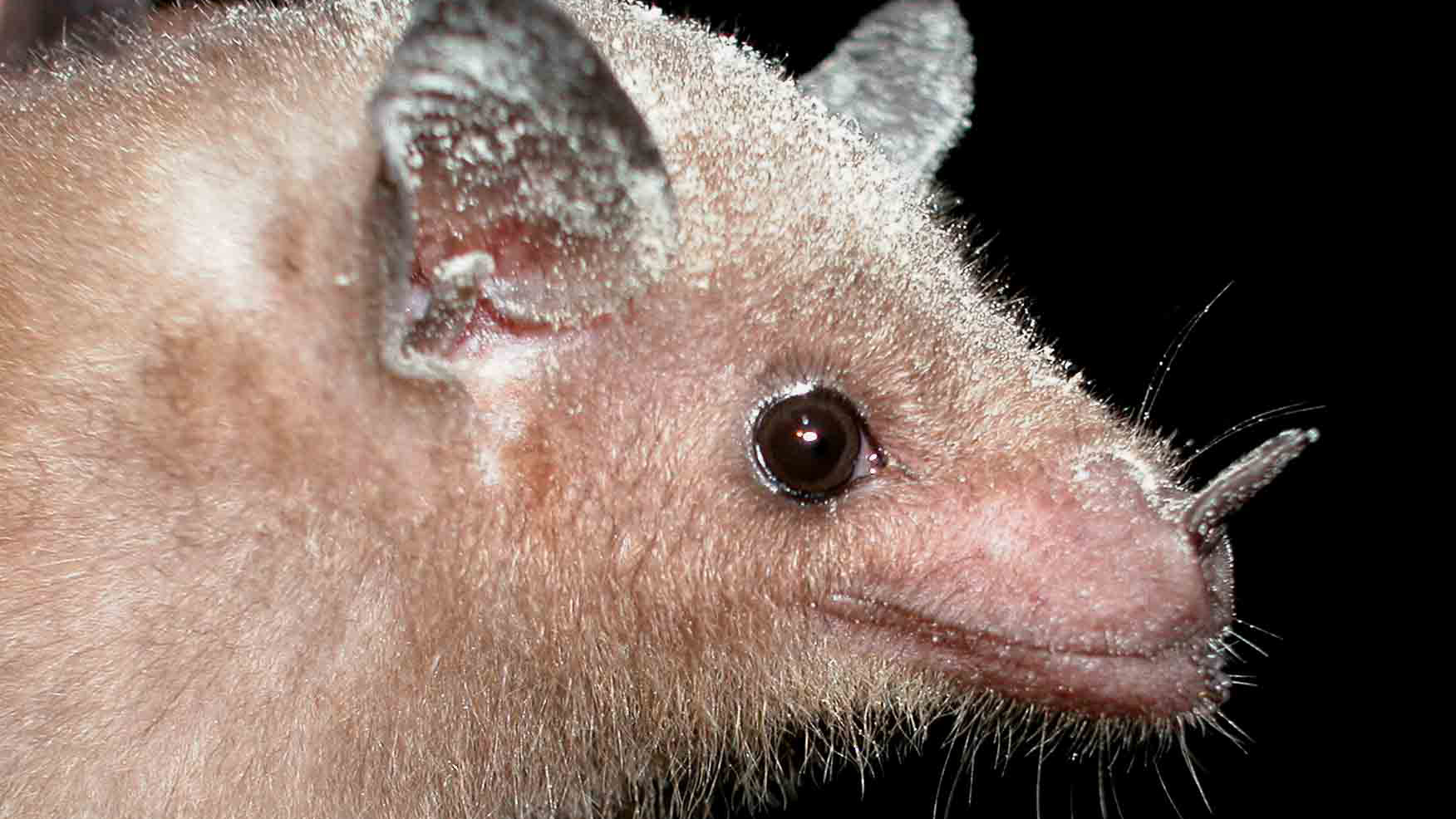
Lesser long-nosed bats don’t get white-nose syndrome because instead of spending winters in dank hibernacula they migrate between the American Southwest and the tropics of Mexico, pollinating plants and preserving ecosystems along the whole route.
Three factors contributed to the bat’s demise — in order of importance: anti-bat superstitions; clumsy, nonselective vampire-bat control; and habitat destruction.
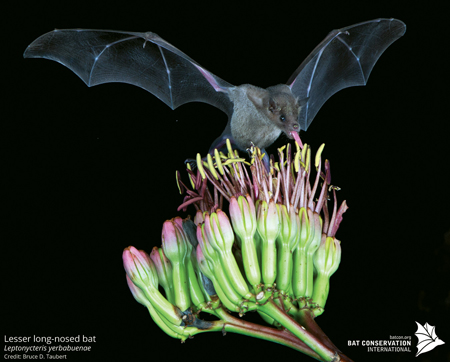
“Bat persecution got worse in the early 1990s with the chupacabra scare,” recalled ecologist Dr. Theodore Fleming who wrote the recovery plan for the lesser long-nosed bat.
If you haven’t seen a chupacabra (derived from the Spanish “chupar,” meaning “to suck”), there’s a good reason. A chupacabra is a half-man, half-bat critter said to emerge from dark places (only during times of economic hardship) to exsanguinate goats and sheep. Fleming and his colleagues would find burning tires in caves, a popular prescription because when the smoke cleared the caves were invariably chupacabra-free. Another benefit in the eyes of the public was the elimination of whatever bat species happened to be roosting.
And this from Dr. Merlin Tuttle, founder of Bat Conservation International: “When we did our research at Kino Bay we’d ask people where these bats roosted. They’d tell us: ‘Whatever you do don’t go in there. They urinate, and if it gets in your eyes, you’ll go blind.’ We tried to tell them different …”
A Tequila Toast to Bats
Most lesser long-nosed bats spend their lives in Mexico. There’s even a non-migratory population. Mexico was able to delist the species in 2015 thanks to the heroic efforts of Dr. Rodrigo Medellín and his students at the National Autonomous University of Mexico.
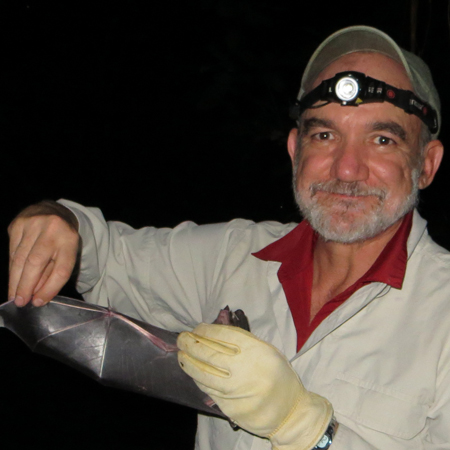
“I’ve been working to fix the bad reputation of bats,” he declared. “In ten minutes I turn people around, and they come from enemies of bats to defenders. I tell them how lesser long-nosed bats pollinate plants all over our country, including 180 species of agave.”
Tequila is made from Agave tequilana (blue agave). For up to 14 years a plant will store sugar in order to produce one enormous flower spike; then it dies. So to get maximum sugar, farmers traditionally harvested all their blue agave before it bloomed. The plant reproduces not only from seeds but by sending out shoots that produce exact duplicates of the parent. That’s how fields get repopulated.
“More than 20 years ago I went to the growers and told them they owed this wonderful tequila to the bats because of pollination and the least they could do was give a little back by letting a few agaves flower,” Medellín continued. “They sent me packing, not even a thank you. Then ten years ago I went back and gave them this paper that showed 160 million agaves are clones of only two plants. ‘You are playing with fire,’ I said. ‘Genetic diversity is essentially zero. All it takes is for one disease to hit one plant and all are sick.’

“‘Very interesting Dr. Medellín. Very nice paper. But don’t call us; we’ll call you.’ So six years ago the disease shows up and hits the agave fields hard. I swear that I did not put it in. Then they came to me, very interested, and said: ‘What was that thing about the bats and disease?’ I made a plan: ‘All you need to do is allow just five percent of your agaves to flower, and in one hectare you will be feeding 90 bats per night.’”
I asked Medellín about the claim of some bat biologists that undiscovered, unvisited roosts at the time of listing rendered endangered status unnecessary.
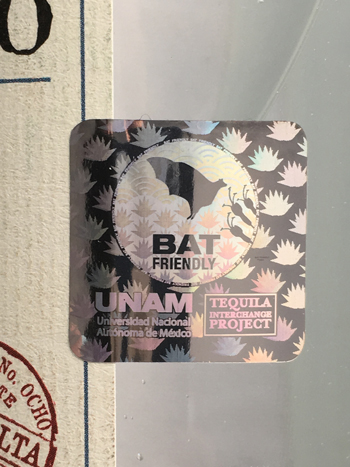
“I don’t believe that,” he replied. “I was part of those early expeditions with the U.S. Fish and Wildlife Service. We went through the habitat in Mexico looking at historical roosts. And where we were supposed to find thousands of bats we found 100 here, 150 there and so on. And some of the caves were empty. All our monitoring is showing stability and growth. Five years ago my students went to two caves, and came back with reports of lesser long-nosed bats. ‘Hit the books,’ I told them. ‘I’m sorry; you are wrong. There have never been lesser long-nosed bats in those caves.’ So they brought me there; and we had 4,000 in one and 5,000 in another.”
In 2014 Medellín, his university and the nonprofit Tequila Interchange Project (an alliance of bartenders, tequila producers and scientists) introduced “bat-friendly tequila.” Public demand for it is another motivator for growers. On November 30, 2016, 300,000 bottles in five brands hit U.S. and Mexican markets: Tequila Ocho, Tapatio, Siete Leguas, Tesoro de Don Felipe and Siembra Valles Ancestral.
Bats at the Hummingbird Feeder
In the U.S. most lesser long-nosed bat habitat is managed by the Bureau of Land Management, Forest Service, National Park Service and the U.S. Army. Roosts in caves and abandoned mines have been protected from human disturbance with site closures and bat-accessible gates. Habitat restoration in Organ Pipe Cactus National Monument and Coronado National Memorial has included agave and saguaro plantings.
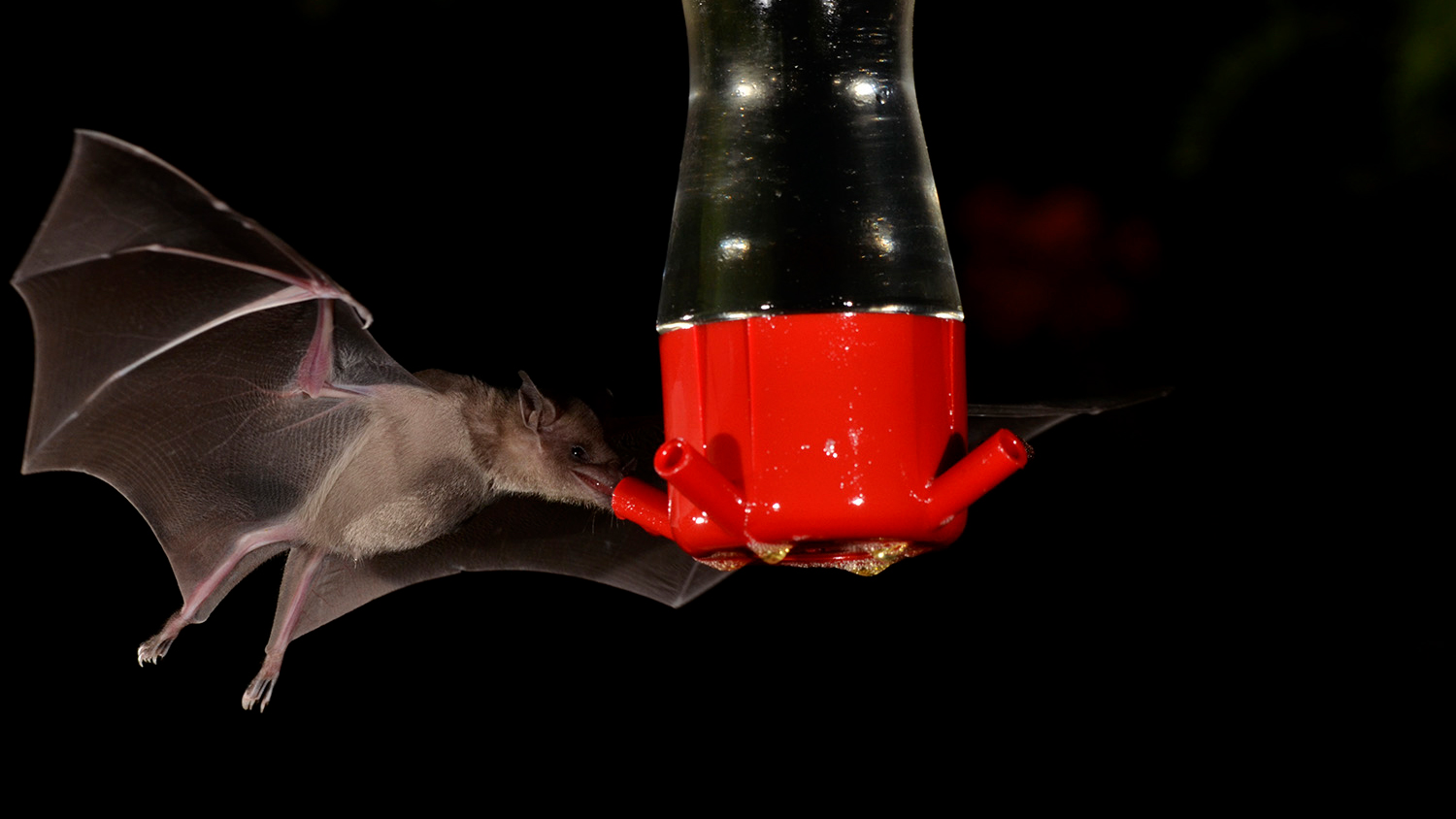
Citizen science has been instrumental in identifying roosts and monitoring populations. In 2007, following widespread agave failure, people in the Tucson area started noticing lesser long-nosed bats at their hummingbird feeders.
The Town of Marana helped coordinate a project where homeowners could register their hummingbird feeders and fill out data sheets, and it set up a website to download data and share information. The project also allowed managers to identify roosts by capturing bats with mist nets and gluing small transmitters to their backs.
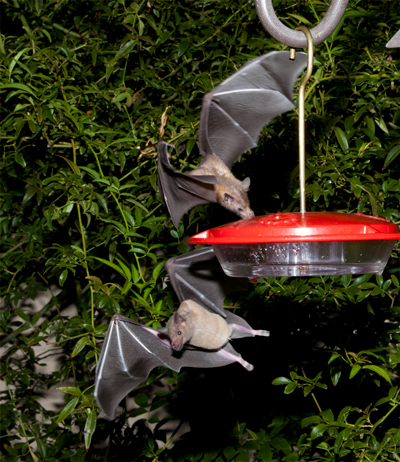
Twenty years ago, under Section 10 of the Endangered Species Act, Arizona’s Pima County signed up for a Habitat Conservation Plan by which, in exchange for protecting roosts and food plants, it was guaranteed immunity from prosecution should any activity result in unintentional “take” of lesser long-nosed bats.
When endangered or threatened protection is removed from a species there’s always the danger that it will be forgotten and face old and new dangers — among the latter, in this case, global warming and the slap-dash proliferation of bat-killing wind turbines in Mexico and the U.S.
I couldn’t find one environmental outfit that didn’t support delisting. But because the Fish and Wildlife Service hasn’t always followed through on post-delisting protocols, each group left me with the same cautionary message. Bat Conservation International’s Dr. Winifred Frick articulated it as well as anyone: “We want to have support for monitoring the species so we can make sure these trends toward recovery and stability will continue.”
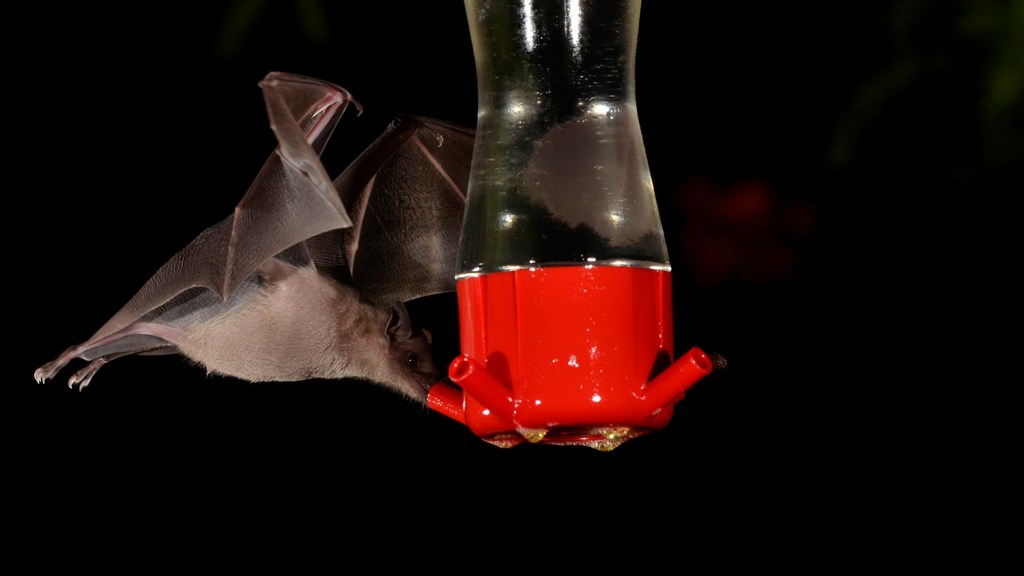



Since July, every night lesser long-nosed bats have emptied all three of the feeders that serve hummers and gila woodpeckers by day around my place in midtown Tucson. If I stand just outside my kitchen late at night, the bats fly up to me to check me out. Each morning before my coffee, I clean and refill the feeders. As of October 25th, I continue to see the bats. This is the longest time they’ve been here in the last 3 years. If you’d like to hear and see my stories about other micro and megabats: https://www.azpm.org/s/40485-the-art-of-paying-attention-bats/
I really enjoyed the info & pictures on your articles. Had never heard bats before. As I said in my comment there – I’m now a little suspicious that maybe I had a wider variety at my hummer feeders than I thought. The last 2 years it appears I’ve been feeding a family of Orioles! Maybe some other creatures are dropping in!!
Thanks
Great story. I love tequila and wildlife as well. I will look for bat friendly labeling to help support our winged friend, and the companies that do the right thing. ???
For Release: April 17, 2018
Contacts: Jeff Humphrey (602) 242-0210
Bi-national Success – Lesser Long-nosed Bat Has Recovered
Service-led partnerships with local communities, conservation groups, agencies and Mexico bring bat back from the brink of extinction
A charismatic, winged pollinator responsible for helping produce tequila is making a comeback despite tough odds thanks to a U.S. Fish and Wildlife Service-led three-decade partnership. Although many bat species in North America today are vexed with declining populations, partners in the United States and Mexico have helped recover the lesser long-nosed bat, which today becomes the first bat ever removed from Endangered Species Act (ESA) protections due to recovery.
When initially protected under the ESA in 1988, there were fewer than 1,000 of the nectar-feeding bats at 14 known roosts range wide. Today, there are an estimated 200,000 bats at 75 roosts in the U.S. Southwest and Mexico.
“The science clearly shows threats to the bat have been eliminated or reduced to the point that the bat has recovered,” said Service Southwest Regional Director Amy Lueders. “The Service is proud of our strong, decades-long partnerships with very diverse stakeholders on behalf of the lesser long-nosed bat. Without partnerships and collaborations such as these, successful recovery would not be possible.”
“The story of the lesser long-nosed bat shows that conservation and science can work together to provide species the chance to recover and persist,” says Chief Scientist at Bat Conservation International, Dr. Winifred Frick. “Scientists and conservation groups in both Mexico and the U.S. have worked together over the years toward recovering these bats, it’s an exciting success story for collaborative conservation efforts and the Endangered Species Act.”
“Any time we can properly recover a species so that it can be removed from the Threatened and Endangered Species List is a great day for wildlife conservation,” said Jim deVos, Assistant Director of the Arizona Game and Fish Department. “Through the dedicated boots-on-the-ground work of multiple partners, the overall population trend for lesser long-nosed bats appears to be increasing and conservation actions are in place to ensure that remaining threats are minimized. We support the U.S. Fish and Wildlife Service’s action to remove the species from the list of threatened and endangered species.”
The successful recovery is an international team effort comprised of biologists and researchers in the United States and Mexico, state, federal and Tribal entities, non-governmental organizations, and citizen scientists in Pima County, Arizona, and tequila producers in Mexico. The lesser long-nose bat is an important pollinator and seed disperser of the Sonoran Desert’s emblematic saguaros and Mexico’s tequila-producing agave. The bat also contributes to healthy soils and habitats and provides sustainable economic benefits for communities in both nations.
For a decade, southern Arizona residents have monitored night-time bat use of hummingbird feeders. These data provided biologists with a clearer understanding of lesser long-nosed bat migration timing. These residents also voluntarily supported biologists in capturing bats and affixing radio transmitters to them that aid in finding roost sites.
In the United States, most lesser long-nosed bat roost and forage areas are managed by federal agencies (U.S. Forest Service, Bureau of Land Management, National Park Service and the U.S. Army’s Fort Huachuca). All have integrated the management of lesser long-nosed bat forage plants – agaves, and saguaro and organ pipe cacti – into their land use and resource management plans. Agencies also helped deter human disturbance of roost site caves and abandoned mines. With the assistance of state agencies and Bat Conservation International, stakeholders designed and installed bat gates that allow bat access to roost sites and eliminate human access.
In Mexico, tequila producers, who rely on and cultivate agaves, are integrating harvest and cultivation practices in recognition that agaves symbiotically rely on bats for pollination and are even marketing “bat friendly tequila.” Historically, the control of vampire bats for rabies control and to reduce impacts to the livestock industry destroyed roost sites of non-target bats like the lesser long-nosed bat. An active education campaign is helping change attitudes regarding the conservation of bats and improve bat identification and appreciation. As a result of reduced threats and improved population numbers, the bat was removed from Mexico’s endangered species list in 2015.
To ensure the lesser long-nosed bat continues to thrive following its delisting, the Service will soon release a draft Post-Delisting Monitoring Plan. Together with conservation partners, the Service is committed to monitoring the lesser long-nosed bats’ continued roost occupancy, as well as monitoring and assessing the bats’ forage availability.
Lesser long-nosed bats range from southern Mexico to southern Arizona and New Mexico. Some Mexican populations are year-round residents. The migratory ones leave southern Mexico only to find maternity roosts in northern Mexico and Southwestern U.S. ., where arriving pregnant females have access to forage for birthing and nursing their pups. The bats’ migrations and maternity roosting are reliant on timing and location of the “nectar trail” – the blooming and fruiting season of agaves, saguaros and organ pipe cacti, among other flowering plants that provide their nutrient-rich nectar diet. Bat colonies seek out roost sites in caves, abandoned mines and large crevices and will travel up to 40 miles each night to reach their nocturnal foraging areas.
The delisting determination draws upon a scientific species status assessment – an evaluation of threats and an assessment of the bat’s long-term viability. The species status assessment also considered the potential effects that a changing climate may have on the nectar trail and the bats’ foraging, migration and roosting cycles. The lesser long-nosed bat has shown the ability to adapt to adverse forage conditions, and biologists found that its flexible and adaptive behaviors will allow it to remain viable under changing climatic conditions.
Hi Ted, thanks for that interesting article. Do you have any tips on how to order bottled bat friendly tequila?
Thanks!
Laurie
Thank you for this most informative article. Is it possible to have the Bat Research Project at Sarapiqui, Costa Rica reviewed for the amazing research and outcomes of this international laboratory on the various types of bats’ impact on the environment. Your mention of bats as pollinators resonated greatly; it is one of Sarapiqui’s primary foci.
We travel with Overseas Adventure Travel; they put us in front of the “basics” of a country…..truly, they are doing their part for a sustainable planet.
Dear Ted, I would like to talk with you about “Troublemaker” Bill Townsend
Sincerely, Rick
207 453-2092
We used to have 200+ little brown bats in our barn or bat houses every summer from 1969-2000, migrants from perhaps southern New England.
down to zero for a few years, now recovered to 20-30
What a wonderful story! I had NO idea that there are “tequila bats” out there 😉
Question though, do the Nectar-feeding lesser long-nosed bats ever migrate (in the warmer months of course) to as North a location as New England? I know we have some bats in our yard, as there are very tall trees and we are up against the woods, but am not sure what type. I would love to put out some feeders for them too…although don’t get me wrong, I still want them to eat all the mosquitoes then can!!!
Thank you for the uplifting story. Our present-day state is so depressing with so many legislators and the President against mother nature in EVERY way. They are hell-bent on destroying our beautiful planet. God have mercy on us. I love bats and will only buy bat-friendly tequila from now on.
I adore bats and have tried everything to attract them, but to no avail. I think our homes are not far enough apart where I live in northern West Virginia. My parents, when they were alive, had a farm where there was a small cave with bats that I loved to watch at night. Now I belong to Bat Conservation International so I still get to get my education and give my support.
We must learn about each specie, respect and coexistence with them so the natural balance on Earth will be restore.
I forgot to add, that without bats, how would I get my delicious Margaritas. After all, what kind of world would it be without bats and Margaritas.
This article was so informative and uplifting. I didn’t know bats were pollinators. Bats get a bad rap, but your article sheds important light on the value of bats not only to humans but to other species as well. They are also valuable for their very presence and should be appreciated for the wonderful creatures they are.
Go bats! People really need to be educated about all the good things different species of bats do for our environment, including the ones who keep the mosquito population down.
Great article. However, I do have one question about the urine in the eyes comment. If urine can be a vector for histoplasmosis, then could blindness be possible.
This from https://nei.nih.gov/health/histoplasmosis/histoplasmosis leads me to believe that while bat droppings are a potential vector for histoplasmosis, urine in the eyes would be unrelated –
Histoplasmosis is a disease caused when airborne spores of the fungus Histoplasma capsulatum are inhaled into the lungs, the primary infection site. This microscopic fungus, which is found throughout the world in river valleys and soil where bird or bat droppings accumulate, is released into the air when soil is disturbed by plowing fields, sweeping chicken coops, or digging holes.
Histoplasmosis is often so mild that it produces no apparent symptoms. Any symptoms that might occur are often similar to those from a common cold. In fact, if you had histoplasmosis symptoms, you might dismiss them as those from a cold or flu, since the body’s immune system normally overcomes the infection in a few days without treatment.
However, histoplasmosis, even mild cases, can later cause a serious eye disease called ocular histoplasmosis syndrome (OHS), a leading cause of vision loss in Americans ages 20 to 40.
Scientists believe that Histoplasma capsulatum (histo) spores spread from the lungs to the eye, lodging in the choroid, a layer of blood vessels that provides blood and nutrients to the retina. The retina is the light-sensitive layer of tissue that lines the back of the eye. Scientists have not yet been able to detect any trace of the histo fungus in the eyes of patients with ocular histoplasmosis syndrome. Nevertheless, there is good reason to suspect the histo organism as the cause of OHS.